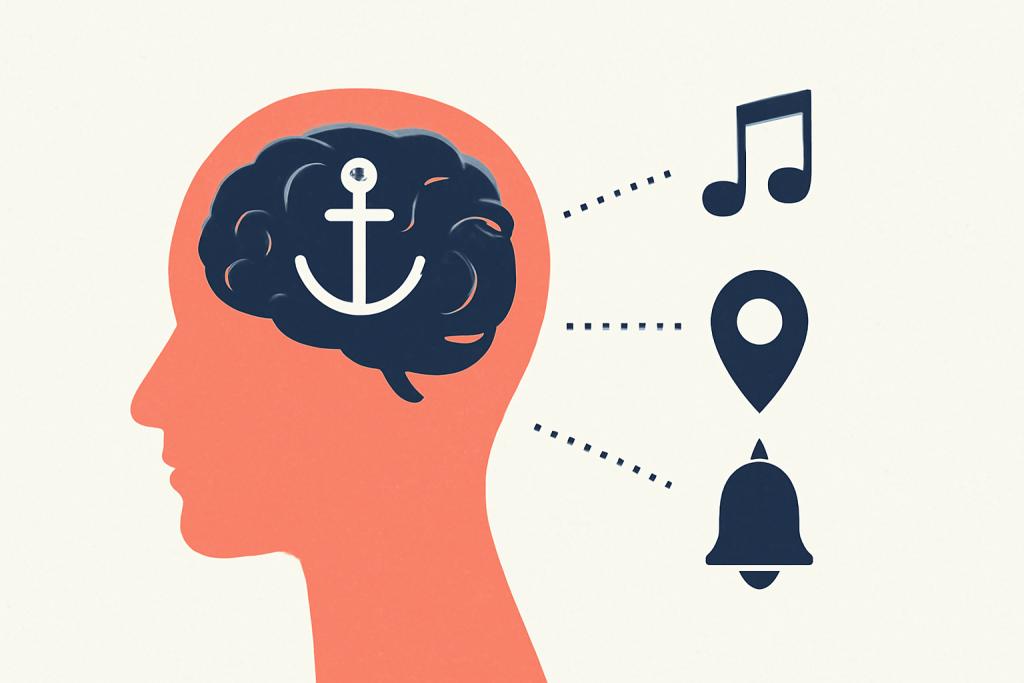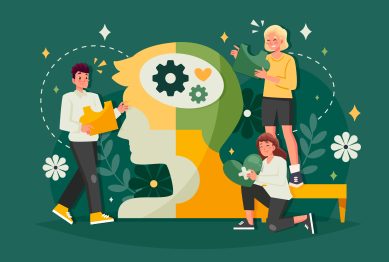Do you ever wonder why certain experiences, phrases, or songs stay stuck in your mind for years? The power behind these long-lasting memories lies in the concept of memory anchors—triggers formed through repetition. These anchors shape the way we think, remember, and make decisions. But how exactly do they work, and why is reuse so vital in this process? Let’s dive into the fascinating world of memory anchors and explore how they are formed and strengthened.

Understanding Memory Anchors
Memory anchors are mental links that associate experiences or information with specific stimuli, such as smells, sounds, or visuals. They are often used in cognitive psychology and marketing to trigger recall or influence behavior. An anchor is a mental shortcut that helps us access memories quickly, triggering automatic responses to stimuli.
The most famous example of a memory anchor is Pavlov’s experiment, where he paired the sound of a bell with food. Over time, the sound alone was enough to trigger salivation. This classic experiment demonstrates how memory anchors can be established by associating a neutral stimulus (the bell) with an emotionally charged experience (the food).
Memory anchors are a powerful mechanism that helps us navigate the world. For example, when you smell a particular perfume, it might remind you of a loved one, triggering warm feelings. Or when you hear a particular song, it could evoke memories of a specific event, such as a wedding or vacation. These associations, which form naturally through repetition and emotion, become anchors.
The Power of Repetition: How Reuse Forms Stronger Anchors
At the core of memory anchoring is repetition. Just like repeated exposure to information reinforces it in our memory, the more we encounter certain stimuli, the stronger the memory anchors become. Here’s how repetition strengthens these connections:
- Strengthened Neural Pathways: Every time you encounter a stimulus—whether it’s a song, a slogan, or a familiar place—your brain strengthens the neural connections associated with it. Studies in neuroscience show that repeated exposure leads to neuroplasticity, where the brain forms new neural connections. For example, when you hear a song from your youth, the neural pathways linked to that memory become stronger, making it easier to recall the specific event connected to it.
- Emotional Reinforcement: Repetition can trigger emotional responses, cementing memories more deeply. A familiar commercial jingle, heard repeatedly, can evoke feelings of nostalgia or happiness, reinforcing its connection to the product. Emotional ties make the memory more vivid and easier to recall. For instance, exposure to a favorite childhood story or movie repeatedly strengthens both the memory and the emotions tied to it.
- Automatic Recall: As a memory anchor is used often, it becomes automatic. A simple cue, like a familiar song or slogan, can trigger a flood of memories. This automatic recall happens because your brain has already established a strong connection through repetition. For example, when a catchy jingle plays frequently in advertisements, it immediately brings the associated product to mind without effort. This automatic response demonstrates how repeated exposure turns memory recall into a seamless process.
Repetition is the key to solidifying memory anchors, making them easier to access and harder to forget.
Real-World Applications of Memory Anchors
- Learning and Education: In classrooms, repetition is often used to solidify concepts. Teachers may ask students to review and recite material multiple times, creating memory anchors that make it easier for students to retrieve information during exams. The more students engage with the material, the more likely they are to remember it long-term. Studies have shown that spaced repetition, where information is reviewed at increasing intervals, dramatically improves memory retention. This technique is often used in language learning, where students are exposed to words repeatedly over days and weeks to strengthen their understanding and recall.
- Marketing and Branding: Advertisers leverage memory anchors to create brand recognition. Through repetitive exposure to logos, jingles, or slogans, brands effectively create emotional triggers that influence consumer decisions. Just think about the classic Coca-Cola commercial jingles that stay with you years after hearing them. A well-known example is Nike’s slogan “Just Do It.” The repetition of this slogan in ads, combined with powerful emotional imagery of athletes overcoming adversity, has created a memory anchor so strong that the phrase is now automatically associated with motivation, strength, and perseverance.
- Psychological Therapy: Cognitive-behavioral therapy (CBT) uses the principle of repetition to reframe negative thought patterns. By repeatedly associating new, positive behaviors with past triggers, therapists help individuals form healthier mental anchors. In trauma recovery, memory anchors are used to help patients shift negative associations with triggering events. By re-associating old memories with new, positive experiences, the brain forms new anchors that help reduce anxiety and PTSD symptoms.
The Role of Memory Anchors in Decision Making
Memory anchors are not just tools for remembering—they are also powerful in shaping our decisions. When you repeatedly face a particular choice, your brain often uses past experiences (memory anchors) to guide your future decisions. For instance, if you’ve repeatedly been exposed to a product advertisement that portrays it as high-quality, you are more likely to purchase that product when faced with a similar choice, even if you haven’t actively studied the product’s features.
These mental shortcuts make decision-making faster and easier. However, it’s important to note that memory anchors don’t always lead to rational decisions. Cognitive biases such as the “halo effect” (where our overall impression of something influences specific judgments) often stem from these anchors. For instance, once a brand is associated with luxury, even a product that’s not as high-quality might still be purchased based on that anchor.
Creating and Strengthening Your Own Memory Anchors
Whether you’re trying to improve learning, shift behaviors, or make smarter decisions, understanding how to create and reinforce memory anchors is crucial. Here’s how you can intentionally use repetition to your advantage:
- Repetition with Emotional Connection: To make a memory anchor more powerful, connect it with emotions. For example, practice a new skill while listening to a specific song or in a setting that makes you feel good. Emotionally charged memories are often more easily recalled.
- Spaced Repetition: Use spaced repetition to strengthen memory anchors. By revisiting information or experiences at intervals, your brain will strengthen the connection and make the memory more resistant to forgetting.
- Visual and Sensory Cues: Pairing information with a visual or sensory cue helps anchor memories. Create a dedicated space for studying, or use a particular scent when reviewing material to build stronger sensory associations.
- Positive Reinforcement: Repeatedly associate positive actions with specific cues. For example, if you want to establish a habit of exercise, pair it with a feeling of accomplishment or a reward.
The Dark Side of Memory Anchors: Manipulation and Overuse
While memory anchors can be incredibly powerful, they can also be exploited. Overuse of repetitive stimuli—especially in marketing and media—can manipulate consumer behavior without their conscious awareness. This is why it’s crucial to be mindful of how often we expose ourselves to certain stimuli, as they can unintentionally shape our behavior and decisions over time.
For instance, companies may repeatedly expose consumers to products during vulnerable emotional moments, such as holiday advertisements, using emotional anchors to trigger purchases they might not otherwise make.
Conclusion
Memory anchors, formed through the reuse of stimuli, are integral to our ability to recall information, make decisions, and shape behaviors. By understanding how repetition strengthens these mental shortcuts, we can use them to our advantage in learning, personal growth, and even in shaping our consumer behaviors. However, it’s important to recognize when these anchors are being manipulated and to stay vigilant against their overuse.
Repetition is key in solidifying these mental associations, but it’s essential to balance the use of memory anchors to ensure that they serve us, rather than manipulate us. Whether in education, marketing, or daily life, understanding the psychology of memory anchors allows us to make better, more informed decisions.
References
- Baddeley, A. (2012). Working Memory: Theories, Models, and Applications. Psychology Press. Available at: https://www.psypress.com (Accessed: 29 July 2025).
- Murdock, B. B. (1962). ‘The Serial Position Effect of Free Recall’. Journal of Experimental Psychology, 64(5), 482-488. Available at: https://pubmed.ncbi.nlm.nih.gov (Accessed: 29 July 2025).
- Gallo, D. A. (2010). The Psychology of Learning and Memory. MIT Press. Available at: https://mitpress.mit.edu (Accessed: 29 July 2025).









